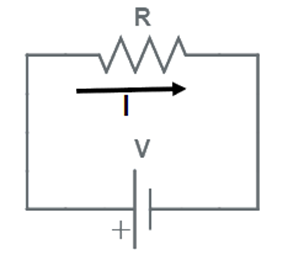Unilateral and Bilateral Elements are the two different types of electrical / electronic circuit element on the basis of their V-I characteristics on reversal of voltage polarity. This article describes Unilateral and Bilateral Elements and circuit in detail with relevant diagrams.
Unilateral Elements:
Unilateral elements in electrical circuit is defined as the element whose V-I characteristics changes on reversal of polarity of applied voltage. This essentially means that, the magnitude of the current passing through this type of element is affected due to change in the polarity of the applied voltage.
The impedance offered by these elements vary with variation in flow of current. Diode and transistor are examples of unilateral element.
Unilateral Circuit:
An electrical/electronic circuit which have at least one unilateral element is called unilateral circuit. In such circuits, when the direction of current is changed, the characteristics or property of circuit may change.
Let us understand this concept using a circuit diagram. Refer the circuit shown below.

This circuit is having a diode connected with a resistance and a DC voltage source. When switch SW1 is closed, the diode is forward biased and hence it will allow current (I) to flow through it.
However, when switch SW2 is closed, the polarity of the supply voltage is revered, the diode will become reversed biased and hence, it will not allow the current to flow through it. Current I = 0 in the circuit in this case.
Thus, we see that the characteristics of the circuit is changed on reversal of supply voltage polarity due to presence of diode. Therefore, diode is unilateral element and the circuit is unilateral circuit.
Bilateral Elements:
Bilateral elements are defined as the elements through which magnitude of current is independent of polarity of supply voltage. This means, the V-I characteristics of such type of element does not get affected by the polarity of voltage. A resistor, inductor, capacitors are example of bilateral circuit elements.
Bilateral Circuit:
An electrical/electronic circuit which contains only bilateral elements such as resistor, inductor and or capacitor is called bilateral circuit. The characteristics of circuit does not change with change in polarity of applied voltage.
Let us consider a simple circuit to understand the bilateral element and bilateral circuit. Refer the circuit below.

The magnitude of current (I) flowing through the circuit be always be (V/R) irrespective of the polarity of supply voltage (V). However, the direction of flow of current will change on supply voltage polarity but the magnitude of current will remain same. Here, resistance is bilateral element and the circuit is bilateral circuit.